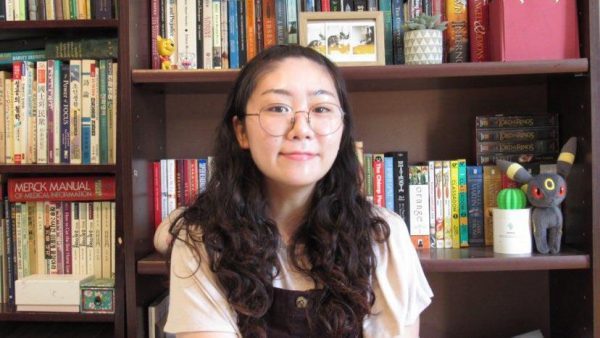
With the prevalence of Netflix, Hulu, and YouTube, it’s easy to forget to read. Before this year, I kept telling myself that I’m too busy to crack open a book, even though I’d end my nights by blasting through a third of Breaking Bad.
I’m not saying it’s wrong to enjoy visual content. I actually think it’s incredibly valuable– you can learn a lot through the art of watching. But there’s also a lot of skills you fail to develop when you lose the world of reading (not to mention how easy finishing thousands of pages of class reading is when you read for fun).
School is partially guilty (but also not really at fault) for our aversion to books- it’s just really hard to get into something when you’re required to dissect why trees are described a certain way. So I would encourage you to take breaks you have from school or school work and read. Exploring new books you’ve just stumbled upon, read the literary sibling to your favorite movie/TV show, look up random poems or short stories on the internet. Use reading to wind down, spend time on service-less subways, or just hop into a different reality.
Here is a small sampling of the books I’ve read during this very odd summer. I left out books that I felt like people may not be interested in hearing about. But if there’s a book you’d like me to cover, feel free to let me know through the contact form!
The books are ordered from (my) lowest rating to highest rating. For your ease, I’ve included:
- Title, Author, Publication Date
- Back-of-the-Book synopsis
- My rating out of 5 (5 being the best, 1 being… not very the best)
- A brief (SPOILER FREE) explanation of my rating
Paprika by Yasutaka Tsutsui, 1993
(0.25/5)

TW: rape, sexual violence, misrepresentation of mental illness
“When prototype models for a dream-invading device go missing at the Institute for Psychiatric Research, employees soon learn that someone is using these new machines to drive them all insane. Brilliant psychotherapist Atsuko Chiba–whose alter ego is a dream detective named Paprika–realizes she is in danger. She must venture into the dream world in order to fight her mysterious opponents. Soon nightmares begin to leak into daily life and the borderline between dream and reality grows unclear. The future of the waking world is at stake. Yasutaka Tsutsui’s celebrated 1993 novel– the inspiration for the widely acclaimed anime film of the same name (“A gorgeous riot of future-shock ideas and brightly animated imagery… A mind-twisting eye-tickling wonder,” The New York Times)–is a rollicking, wildly entertaining journey into the world of imagination.“
Where do I begin with this book… Paprika is a Japanese novel that was adapted into a beloved film back in 2006. Its stunning visuals and twisting storyline enamors viewers and makes it a cult favorite. Now, if only that were true for the book. This book dances on the border of widely loved and intensely hated. If you’re interested in Japanese literature, don’t start with Paprika. I’d recommend two of Tsutsui’s other books: Salmonella Men on Planet Porno (a collection of short stories) and The Girl Who Leapt Through TIme (which is also a really good movie).
I’ll start with the positives. The first half is a little slow, but it’s a great introduction to the story’s strong female protagonist: Dr. Atsuko Chiba. Chiba is smart, beautiful, mysterious, and a Nobel Prize nominee. The second half of the book zips by quickly, making it a riveting adventure. But that’s where the positives end.
There’s no way that I can think of this book as having a good translation (there’s a line where the heroine of the story says “please rape me”). Knowing this wasn’t first written in English makes me want to give as many passes as possible. However, the very blatant inaccuracies in depictions of mental health and sexual violence are issues that transcend language. Schizophrenia’s description is offensive and turns it into a wild, contagious illness. Descriptions of rape are fairly common in the book, as well. Tsutsui does not attempt to explore the effects of sexual violence and the psyche, instead choosing to make Chiba talk about rape in a manner that makes her a consenting participant (please shudder at “consensual rape”). To Tsutsui, sexual violence is male gratification, and women are tools for reaching that gratification.
To express exactly how much I despise both Tsutsui and this book, here’s a particularly disgusting (now deleted) tweet from Tsutsui back in 2017:
“‘That girl is cute. Everyone, let’s go and ejaculate in front of her and shower her with semen.’ on his twitter.” [In reference to the Statue of Peace, which was erected to honor the comfort women who suffered because of the Japanese occupation in Korea].
So here we have a prized Japanese novelist asking the public to sexually deface a physical representation of Japan’s refusal to acknowledge the sexual slavery of World War II. Fascinating.
You won’t leave Paprika thinking about the mysteries of the human psyche. Instead, you’ll be questioning whether or not you just read the fantasies of a misogynistic, homophobic mind. This is one of the few times I’ll admit that the movie is far better than the book. If you do have the misfortune of reading it, let me know. We’ll hate it together.
The Japanese Lover by Isabel Allende, 2015
0.5/5
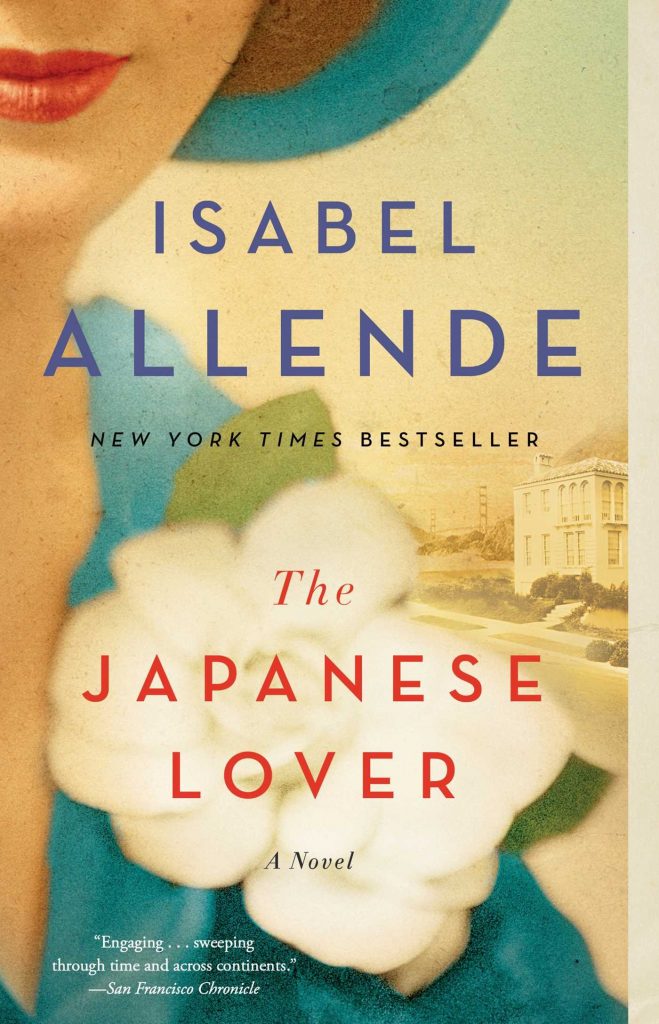
In 1939, as Poland falls under the shadow of the Nazis and the world goes to war, Alma Belasco’s parents send her overseas to live in safety with an aunt and uncle in their opulent mansion in San Francisco. There she encounters Ichimei Fukuda, the son of the family’s Japanese gardener, and between them a tender love blossoms. Following the Japanese attack on pearl Harbor, the two are cruelly pulled apart as Ichimei and his family–like thousands of other Japanese-Americans–are declared enemies and forcibly relocated to internment camps run by the United States government. Throughout their lifetimes, Alameda and Ichimei reunite again and again, but theirs is a love that they are forever forced to hide from the world.
Decades later, Alma is nearing the end of her long and eventful life. Irina Bazili, a care worker struggling to come to terms with her own troubled past, meets the elderly woman and her grandson, Seth, at San Francisco’s charmingly eccentric Lark House nursing home. As Irina and Seth forge a friendship, they become intrigued by a series of mysterious gifts and letters sent to Alma, and learn about Ichimei and this extraordinary secret passion that has endured for nearly seventy years. Sweeping through time and spanning generations and continents, The Japanese Lover explores questions of identity, abandonment, redemption, and the unknowable impact of fate on our lives. Written with the same attention to historical detail and keen understanding of her characters that Isabel Allende has been known for since her landmark first novel, The House of the Spirits, The Japanese Lover is a profoundly moving tribute to the constancy of the human heart in a world of unceasing change.
I love Isabel Allende. I despise this book. To preface: I was in the bookstore (pre-COVID 19 era), looking for a new book to read. I had just reread Allende’s House of the Spirits, so I was intrigued by The Japanese Lover. There is a lot wrong with this book. For one, fetishization of Asia, specifically Japan.
The book focuses on the connection (and reconnection) between Alma Belasco and Ichimei Fukuda. Allende rests on many East Asian stereotypes to craft Ichimei, an ultimately two-dimensional shadow of the man who could have been something phenomenal in the book.
Much of their relationship takes place during the aftermath of World War II. Ichimei, being Japanese American, experiences much of the strife fellow Japanese Americans did during their internment in the United States. But what Allende leaves out, like the implications of being Japanese during World War II and anything about Ichimei that doesn’t involve flowers and being “gentle” (read: the East Asian stereotype of submissiveness), are most damning for her book. Just read the synopsis I included above, which was printed on the cover of the book… To Allende, Ichimei Fukuda is just a bouquet of flowers. Ichimei doesn’t come off as nuanced and complicated, as was the situation for many Japanese and Japanese American people at the time, having to deal with Japan’s imperial actions and the horrific deeds from the US to end the war. Instead, Ichimei’s purpose in the novel is to constantly be Alma’s flat, quiet love interest. Ichimei sees no development, no change, no growth. Despite the book’s title being The Japanese Lover.
A lesser fault (as in not racist and more about how the novel was written) is that some of the characters are just plain old boring. Very few of the characters we meet have a lasting impact on the reading experience of the novel. They basically exist to exist. One such example is actually one of the main characters, Irina Bazili. Much of the story is focalized through Irina, as she is the one who slowly uncovers Alma’s story. But Irina herself doesn’t have a compelling story to tell. Or her story is just severely outshone by Alma’s. And because our main storyteller fades into the background, no character walks away with a clear motive for any of their actions. If you want more Allende, just reread House of the Spirits. This just ain’t it.
The Subtle Art of Not Giving a F*ck by Mark Manson, 2016
1/5
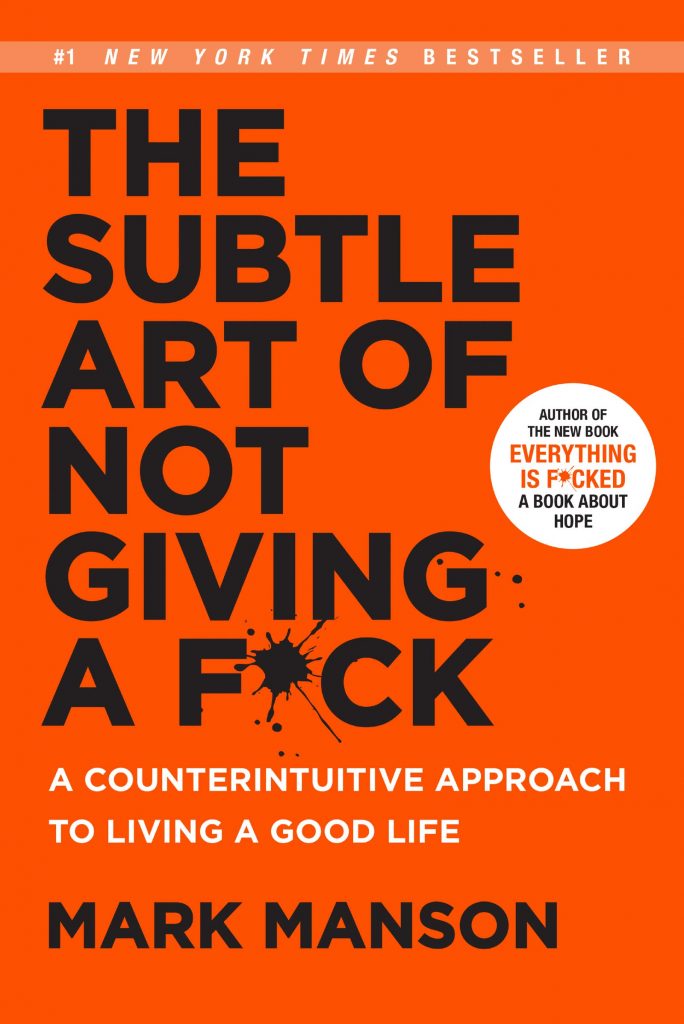
For decades we’ve been told that positive thinking is the key to a happy, rich life. But those days are over. “F*ck positivity,” Mark Manson says. “Let’s be honest; sometimes things are f*cked up and we have to live with it.” For the past few years, Manson–via his wildly popular blog–has been working on correcting our delusional expectations for ourselves and for the world. He now brings his hard-fought wisdom to this groundbreaking book.
Manson makes the argument–backed by both academic research and well-timed poop jokes– that improving our lives hinges not on our ability to turn lemons into lemonade, but on learning to better stomach lemons. Human beings are flawed and limited–as he writes, “Not everybody can be extraordinary–there are winners and losers in society, and some of it is not fair or your fault.” Manson advises us to get to know our limitations and accept them. This, he says, is the real source of empowerment. Once we embrace our fears, faults, and uncertainties–once we stop running from and avoiding, and start confronting painful truths–we can begin to find the courage and confidence we desperately seek.
“In life, we have a limited amount of f*cks to give. So you must choose your f*cks wisely.” Manson brings a much-needed grab-you-by-the-shoulders moment of real-talk, filled with entertaining stories and profane, ruthless humor. The manifesto is a refreshing slap in the face for all of us so that we can start to lead more contented, grounded lives.
I walked into this book with high expectations. Maybe I set them a little too high. The Subtle Art of not Giving a F*ck is for the smug man who enjoys commanding rooms with topics he knows nothing about. There’s nothing in this book that cannot be gleaned from any other half-competent writer. The profanity on the cover is really just for shock value. There’s profanity sprinkled throughout the book, as well. The dirty-mouthed surprises are fun for a bit, but they’re not utilized in a way to provide any real comedic effect. Some valid points are made, but none of them are revolutionary or actually explored much. Again, nothing he says is new. Hard pass on this; I almost regret spending time to read it. Go read a self-help book that actually has some flavor.
Call Me by Your Name by André Aciman, 2007
3/5
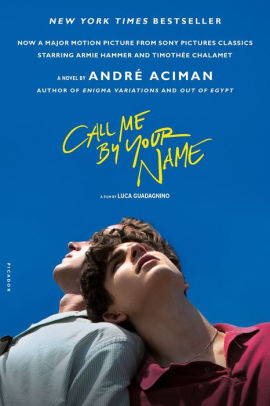
Call Me By Your Name is the story of a sudden and powerful romance that blossoms between an adolescent boy and a summer guest at his parents’ cliffside mansion on the Italian Riviera. Each is unprepared for the consequences of their attraction, when, during the restless summer weeks, unrelenting currents of obsession, fascination, and desire intensify their passion and test the charged ground between them. Recklessly, the two verge toward the one thing they both fear they may never truly find again: total intimacy.
I know it looks as though this book is stuck near the bottom as a rating, But don’t let that keep you from giving it a try! To me, 3 and beyond counts as an alright book, 3.5 and beyond is good. I just don’t think this is my type of writing.
To be frank, I thought the movie was better. In a few parts. The movie evolves the characters in Aciman’s novel, giving them a newfound level of depth. Comparatively, that means everyone who isn’t Elio and Oliver in the novel ends up feeling rather two-dimensional. Now, that isn’t necessarily a bad quality for a story. That helps distinguish your main characters from everyone else. However, it does result in the world surrounding the couple becoming rather flat.
The pacing of the novel is also not the best. The first two-thirds of the novel occurs almost entirely in Elio’s mind– what does he think about Olver rather than what happens with Oliver. The novel starts to move faster once… the characters actually start to move.
The end of the novel is marvelous, but I don’t know if a great ending is worth trudging through a lot of lackluster writing.
If Cats Disappeared from the World by Genki Kawamura, 2012
3/5
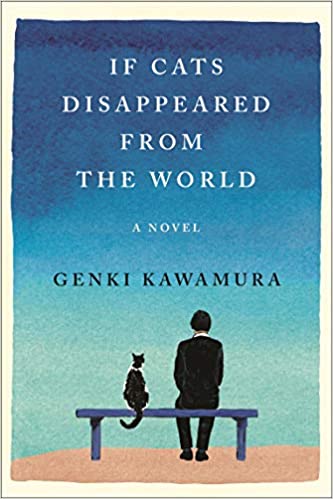
The young postman’s days are numbered. Estranged from his family and living alone, with only his cat, Cabbage, to keep him company, he was unprepared for the doctor’s diagnosis that he has only months to live. But before he can tackle his bucket list, the devil shows up to make him an offer: In exchange for making one thing in the world disappear, the postman will be granted one extra day of life. And so begins a very strange week that brings the young postman and his beloved cat to the brink of existence.
With each object that disappears, the postman reflects on the life he’s lived, his joys and regrets, and the people he’s loved and lost.
Genki Kawamura’s timeless tale is a moving story of loss and reconciliation, and of one man’s journey to discover what really matters most in love.
If Cats Disappeared from the World is a very quick read. If you need something to get back into reading, this is perfect for you- minimal effort, lots of emotions. If you need any big hint as to how this book goes, Genki Kawamura is the producer for the hit movie, Your Name.
This book is funny, heartwarming, and endearing. You’ll finish reading it in a sitting and begin thinking about everything you treasure and why you treasure it. More importantly, it challenges you to think about what you’ve been neglecting.
The Immortalists by Chloe Benjamin, 2018
3.5/5
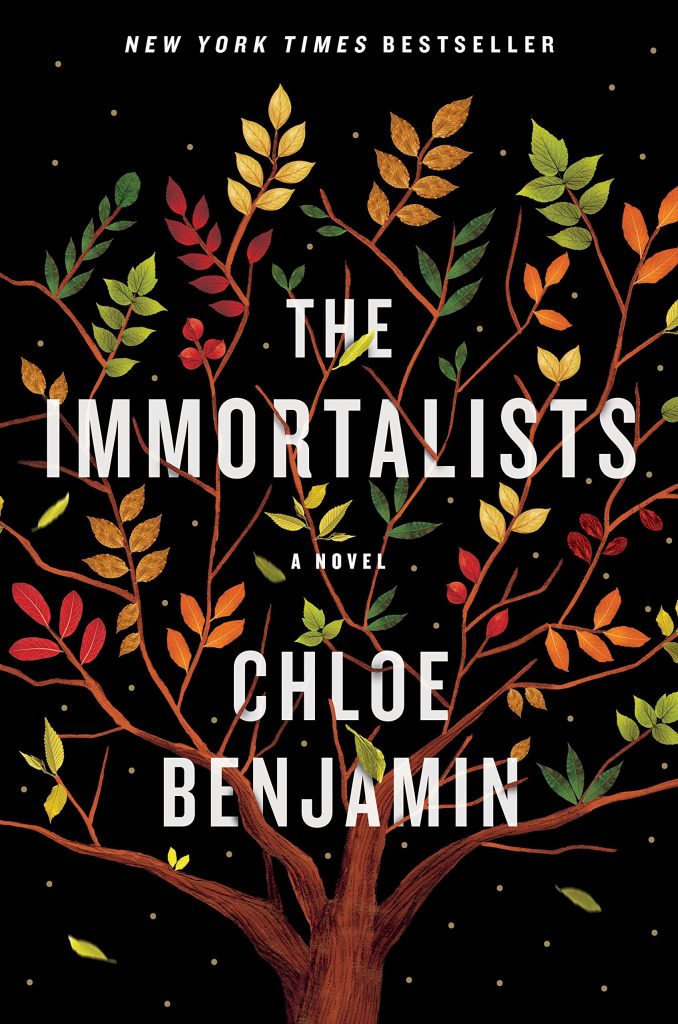
It’s 1969 in New York City’s Lower East Side, and word has spread of the arrival of a mystical woman, a traveling psychic who claims to be able to tell anyone the day they will die. The Gold children–four adolescents on the cusp of self-awareness–sneak out to hear their fortunes.
The prophecies inform their next five decades. Golden boy Simon escapes to the West Coast, searching for love in ‘80s San Francisco; dreamy Klara becomes a Las Vegas magician obsessed with blurring reality and fantasy; eldest son Daniel struggles to maintain security as an army doctor post-9/11; and bookish Varya throws herself into longevity research, where she tests the boundary between science and immortality.Both a dazzling family love story and a sweeping novel of remarkable ambition and depth, The Immortalists probes the line between destiny and choice, reality and illusion, this world and the next. It is a deeply moving restatement to the power of story, the nature of belief, and the unrelenting pull of familial bonds.
I started my summer off by reading The Immortalists. The story told is about a family of small children who learn early on in their lives when they will die. It’s one of those books that makes you sit and wonder how much of your future should be left a mystery. It makes you wonder just how much control you truly have over your life. The novel is very thoughtfully written. Each stage of life is explored through a different child’s story.
There are definitely times where I wish the book were just a little longer. Simon and Klara’s stories, the two stories that we start the book with, are the most compelling. They’re most well thought out and emotional of the bunch. The stories that follow are less developed, but that doesn’t take away the painful emotions that are still communicated through the storytelling. Chloe Benjamin takes The Immortalists and uses it as a mechanism for exploring difficult topics, like the HIV/AIDS epidemic in the ’80s, depression, death, and immortality.
Valley of the Dolls by Jacqueline Susann, 1966
3.75/5
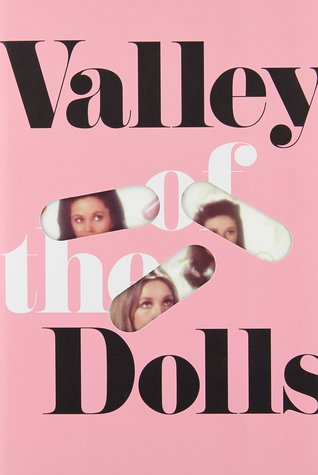
At a time when women were destined to become housewives, Jacqueline Susann let us dream. Anne, Neely, and Jennifer are ambitious young women in New York City who become best friends as they struggle to make their mark. Eventually, they climb their way to the top of the entertainment only to find that there’s no place left to go but down, into the Valley of the Dolls.Five decades after it was first published in 1966, Valley of the Dolls remains the all-time pop culture classic, a pioneering work that tackled women’s rights, gay rights, drug addiction, and the male literary establishment, with signature flair, going on to become one of the world’s most popular novels and an influence on generations of cultural icons. Power, money, celebrity, and the deadly seduction of prescription pills– fifty years on, a bedtime dose of Valley of the Dolls is just as indispensable, and just as gloriously, scandalously fun, as ever.
I read Valley of the Dolls because I saw that it was once regarded as the “best worst book.” I won’t speak too much about the “best worst book” statement, as I feel that that is often a title pegged onto writers who are women and, thus, deeply laced in sexism and cishet white male supremacy. That’s a whole other can of worms to open. So let’s talk about Valley of the Dolls.
Valley of the Dolls follows the stories of three women trying to make it in the entertainment industry: Anne Wells, Neely O’Hara, and Jennifer North. They’re talented, beautiful, and slowly spiraling into a world of scandal. This roman à clef is based on real scandals and celebrities from the time (based on the stories of Judy Garland, Carole Landis, some say Marilyn Monroe, Dean Martin, and more).
I did not expect to like this book. But somehow, I ended up loving it. It feels like someone gossiping to you about huge successes; the writing is incredibly engaging. The story is predictable and unpredictable in all the right ways. I also found it to be a very interesting take on mental health.
I do struggle to understand what Susann would like the reader to take away from Valley of the Dolls. Men are trash? Women shouldn’t desire success? Don’t shoot for the stars, stay at home and cook for your husband? I think Anne Wells starts as an inspiring story– leave home, move to NY, look for a better life because being stuck at home just isn’t for you. But (slight spoiler because everyone ends up like this) she finishes the novel unhappy.
Maybe it’s that everyone has their demons, again emphasizing that strange take on mental health. The demons come out on your climb to the top. When you’re at the top, there’s nowhere else to go but down. In that sense, the novel is begging you to find balance in your life. I suppose that’s for you to decide after you read.
The book is very fun, especially during quarantine. If you need a little more adventure and scandal during your time away from other people, try Valley of the Dolls.
Vanishing New York by Jeremiah Moss, 2017
4/5
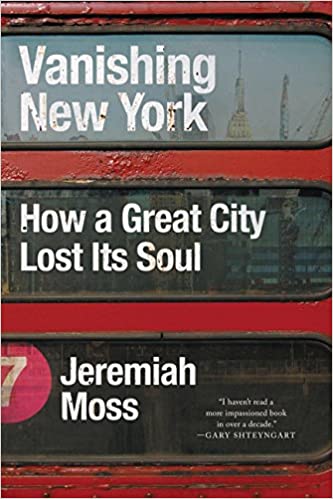
Vanishing New York is a rousing indictment of gentrification in twenty-first-century New York City, by the Jane Jacobs of our digital age. A staggering examination of contemporary ‘urban renewal’ and its repercussions–not only for New Yorkers, but for all of America and the world.
I saw this book on the floor of the Strand within my first few weeks in New York. I knew I wanted to study about cities and urban development, but I also knew that I didn’t have a strong enough foundation. I needed a book that would call out to me and give me that foundation.The cover‘s a statement: look at me, look at what you’ll soon lose. I didn’t have the courage to start the book while I was taking classes; I had this nagging feeling that reading it would take too much time. Looking back, I wish I had read this sooner. This book’s the perfect start for all people interested in cities.
Moss approaches nonfiction in a deeply personal manner. Moss’s envisioning of New York is of a broken city with its landscape permanently disrupted. If you take a few steps back, you’ll realize why Moss has to take such a personal approach to storytelling. Vanishing New York will make you wander the city more thoughtfully. You’ll learn to appreciate what’s managed to remain and ponder on the lack of history from new, extravagant high-rises (cough the gaudy Vessel). It’s going to make you nostalgic, bitter, and wanting to fight back.
Pachinko by Min Jin Lee, 2017
5/5
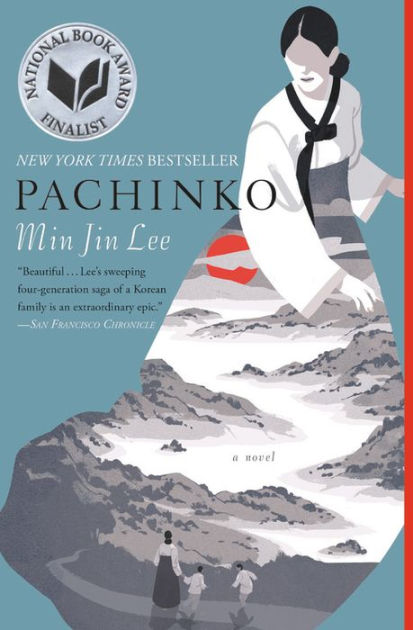
History is seldom kind. In Min Jin Lee’s bestselling, magisterial epic, four generations of a poor, proud immigrant family fight to control their destinies, exiled from a homeland they never knew.
In the early 1900s, teenaged Sunja, the adored daughter of a crippled fisherman, falls for a wealthy stranger at the seashore near her home in Korea. He promises her the world, but when she discovers she is pregnant–and that her lover is married–she refuses to be bought. Instead, she accepts an offer of marriage from a gentle, sickly minister passing through on his way to Japan. But her decision to abandon her home and to reject her son’s powerful father sets off a dramatic saga that will echo down through the generations.Richly told and profoundly moving, Pachinko is a story of love, sacrifice, ambition, and loyalty. From the bustling street markets to the halls of Japan’s finest universities to the pachinko parlors of the criminal underworld, Lee’s complex and passionate characters–strong, stubborn women, devoted sisters and sons, fathers shaken by moral crisis–survive and thrive against the indifferent arc of history.
We’re finishing off this list with one of my favorite books of all time. It helped me explore my identity as a Korean American who has inherited the kind of trauma detailed in the book.
I read Pachinko last year, and I decided to pick it up again to enjoy the magic all over again. Pachinko tells a story that spans generations. It tells stories that aren’t often discussed in the United States. It discusses Japanese imperialism in Korea and inherited trauma. The writing is simply gorgeous. Lee takes you back in time with her, forcing you to see the difficult times, the times of comfort women, destruction of Korean memorials and history, concentration camps, general cruelty, and the inhumane treatment of displaced Koreans in Japan. Korea is still left reeling from the time it was colonized by Japan, especially since, to this day, Japan still does not acknowledge that it happened and continues to discredit the comfort women who bravely came forward with their stories of institutionalized sexual enslavement.
I highly recommend you read this book. And not just once– read it over and over again. It’s one of those special novels where you’ll learn something new every time. And you’ll feel pain for the characters with every read.
